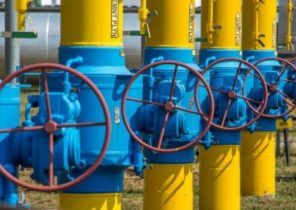NASA and Elon Musk is dreaming about Mars, and manned missions into deep space will soon become a reality. You may be surprised, but modern missiles fly slightly faster rockets of the past.
Fast spaceships easier for a number of reasons, and the best way to accelerate — a rocket with a nuclear engine. Compared to rockets on a conventional fuel oil or contemporary electric rockets, solar energy has a lot of advantages, but in the last 40 years, the United States has launched a total of eight missiles on nuclear-powered.
But last year the laws about nuclear space missions have changed, and work on missiles of the next generation has already begun.
Why do you need speed?
In the first stage of a flight to space need a booster, she brings the ship into orbit. These large engines run on fuel fuel and usually, if we are talking about launching rockets, mean them. In the near future they are not going anywhere — like the force of gravity.
But when the ship gets into space, things start to get interesting. To overcome the force of attraction of the Earth and out into deep space, the ship needs an additional acceleration. And here come into play the nuclear system. If the astronauts want to explore something beyond the moon or especially Mars, have to hurry. The space is huge, and distances are considerable.
Reasons why fast rockets are better suited for long space flights, two: security and time.
On the way to Mars, astronauts are at an extremely high level of radiation with serious health problems, up to cancer and infertility. Can help radiation protection, but it is extremely heavy, and the longer the mission, the more powerful will need shielding. So the best way to reduce the dose just to get to the destination faster.
But the safety of the crew is not the only benefit. The more long flights we plan, the more we need data from unmanned missions. Spacecraft “Voyager-2” (Voyager 2) it took 12 years to reach Neptune, and, passing over, he made some incredible shots. If Voyager’s engine is more powerful, the photos and the data would appear to astronomers much earlier.
So, speed is an advantage. But why nuclear system faster?
Today’s system
Overcoming the force of gravity, the vessel must take into account three important aspects.
Thrust — how much acceleration will get the ship.
Weight efficiency — how much thrust the system can produce for a given amount of fuel.
Energy intensity — how much energy allocates a given amount of fuel.
Today, the most common chemical engines — that is, conventional missiles on fuel fuel and electric rocket powered by the sun.
Chemical propulsion systems provide great traction, but not particularly effective, besides rocket fuel is not too energy intensive. Delivered the astronauts to the moon rocket “Saturn 5” (Saturn 5) were given 35 million Newtons of force at takeoff and was carrying 950 gallons (4 787 318 litres) of fuel. Most of it went to get the rocket into orbit, so the limitation is obvious: wherever you fly, you will need a lot of heavy fuel.
Electric propulsion give traction using electricity from solar panels. The most common way to achieve this is to use an electric field to accelerate ions, such as in the field hall thruster. These devices are used to power satellites, and the weight efficacy five times higher than that of chemical systems. But the traction they give is much smaller — about 3 Newtons. This is only enough to accelerate the car from 0 to 100 kilometers per hour in about two and a half hours. The sun is essentially a limitless supply of energy, but the further the ship moves away from it, the less of him for good.
One of the reasons why nuclear missiles are especially promising is an incredible energy. The uranium fuel used in nuclear reactors, has power, which is 4 million times higher than that of hydrazine, a typical chemical rocket fuel. And in space it is much easier to deliver a little bit of uranium, hundreds of thousands of gallons of fossil fuels.
What about traction and weight effectiveness?
Two of the nuclear option
For space flight engineers have developed two basic types of nuclear systems.
The first thermonuclear engine. These systems are very powerful and very effective. They use a small nuclear reactor division — such as those that are placed on nuclear submarines, for heating gas (e.g., hydrogen). Then the gas is accelerated through the rocket nozzle to provide thrust. Engineers from NASA have calculated that a flight to Mars using a fusion engine will be 20-25% faster than the rocket with a chemical engine.
Fusion engines more than twice as efficient as chemical. This means that they give twice the thrust for the same amount of fuel — up to 100 000 Newtons of thrust. This is enough to accelerate the car to speeds of 100 kilometers per hour in about a quarter of a second.
The second system is a nuclear electric propulsion (YAERD). None of this has not yet been established, but the plan is to use a power reactor division to generate electricity, which then powered the electric propulsion system like a hall thruster engine. It would be very efficient — about three times more efficient fusion engine. Since the power from a nuclear reactor is huge, that can simultaneously operate several separate electric motors, and thrust you get a solid.
YAERD is probably the best choice for extremely distant missions: they do not require solar energy, have very high efficiency and provide relatively high thrust. But for all of their prospects have YAERD still many technical problems that need to be addressed before the commissioning.
Why rockets on nuclear propulsion is still there?
Fusion engines have been studied since the 1960-ies, but in space they have never flown.
Under the Charter of the 1970-ies every nuclear space project were considered separately and could not go further without the approval of several government agencies and the President himself. Coupled with the lack of funding for studies of nuclear rocket systems, it prevented further development of nuclear reactors for use in space.
But that all changed in August of 2019, when the administration trump released a presidential Memorandum. Insisting on maximum safety of the nuclear spins, the new Directive still allows the nuclear mission with a small quantity of radioactive material without complex interagency approval. There is enough confirmation of the Agency sponsor, such as NASA, that mission is consistent with the recommendations on security. Large nuclear mission are the same procedures as before.
Along with this revision of the rules, NASA received budget 2019 $ 100 million on the development of fusion engines. Management of perspective research projects of the Ministry of defense is also developing a fusion engine for space operations, national security beyond the earth’s orbit.
After 60 years of stagnation is not excluded that the nuclear rocket will go into space within a decade. This incredible achievement will open a new era of space exploration. People will go to Mars and science experiments will lead to new discoveries throughout the Solar system and beyond.
Ian Boyd Professor of aerospace engineering Sciences University of Colorado at boulder







